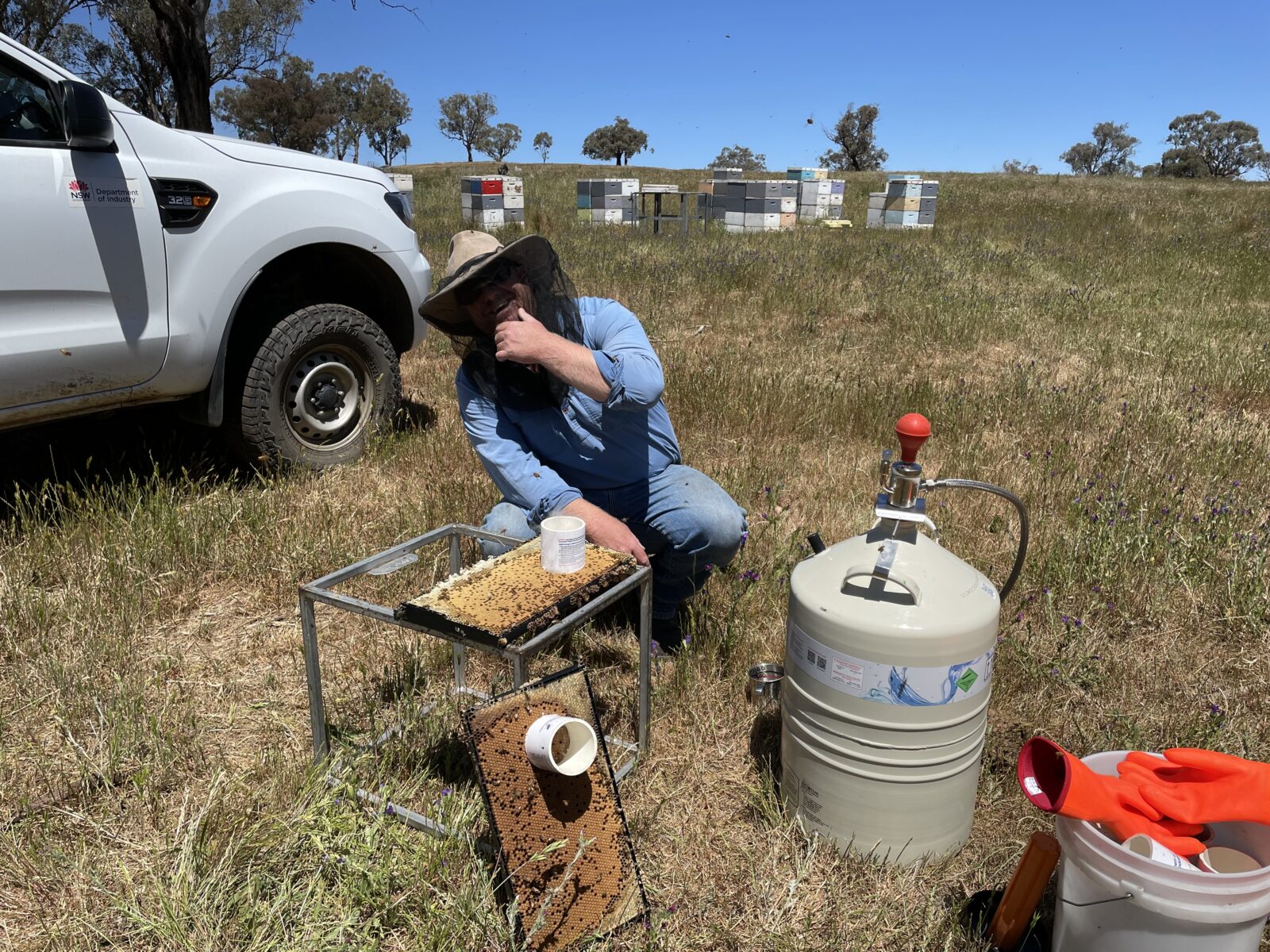AgriFutures Australia welcomes new Chairman
 NATIONAL CHALLENGES AND OPPORTUNITIES / Thursday, 14 December 2023
NATIONAL CHALLENGES AND OPPORTUNITIES / Thursday, 14 December 2023
Selecting for hygienic behaviour traits

Plan Bee is helping beekeepers learn new skills for selecting traits of importance to their breeding objectives, including higher levels of hygienic behaviour.
Hygienic behaviour is a characteristic of honey bees that targets the removal of brood diseases. It can reduce the spread of American foulbrood (AFB) if infected pupae are removed before the AFB bacteria sporulate. Hygienic behaviour is also the primary mechanism of resistance against chalkbrood.
Bees that carry the hygienic behaviour trait detect, uncap, and remove dead and diseased brood before it reaches the infectious stage, preventing the spread of disease within the colony.
Upskilling beekeepers
NSW Department of Primary Industries (NSW DPI) Plan Bee Technical Officer, Emily Noordyke, visited beekeepers in Orange and Cowra in Central West NSW in late October and early November to teach beekeepers how to test for hygienic behaviour.
“Our focus with these visits was to do hygienic testing and give beekeepers the skills to do it themselves if they want,” Ms Noordyke said.
“And because it’s a very specialised skill set that requires special equipment, we wanted to work with them directly and give them the opportunity to see if that’s something they’re interested in working into their breeding programs in the future.
“With this particular test, euthanise a small patch of the brood with liquid nitrogen and put the brood back into the colony. We then see how well the bees remove dead brood in 24 hours.
“If they score higher on these hygienic tests then beekeepers have the potential to select for this trait.
“A colony is typically considered hygienic if it scores 95% brood removal or higher. However, a beekeeper can start by selectively breeding from their most hygienic queens until they achieve a better score over time.
“Walking the beekeepers through the steps to test for hygienic behaviour means they can do it themselves if they really want to focus on hygienic testing. The participating beekeepers were really enthusiastic about the testing, learning new skills and seeing the results of the tests.
“Hygienic behaviour has been heavily selected for in other countries, especially in the United States, where it has been pretty successful in increasing the hygienic behaviour in certain breeding stock.”
Ms Noordyke said the hygienic behaviour testing results at Orange and Cowra were mixed.
“Because there hasn’t been a lot of selection for hygienic behaviour in Australia in the past it is a pretty mixed bag, but we definitely saw some highly hygienic colonies and I was able to highlight which ones we found to be very hygienic in case the beekeepers were interested in breeding off those colonies in particular,” Ms Noordyke said.
“We specifically tested and tracked multiple queen lines in an effort to uncover different patterns in hygienic behaviour depending on colony background.”
For more information about testing for hygienic behaviour, see this NSW DPI factsheet.
Latest News
-
AgriFutures Australia welcomes new Chairman CORPORATE / 14.12.23
CORPORATE / 14.12.23 -
Protecting Australia's beekeeping future through smart traceability HONEY BEE & POLLINATION / 14.12.23
HONEY BEE & POLLINATION / 14.12.23 -
Meet your future agronomists: The five Horizon Scholars getting a career head start WORKFORCE AND LEADERSHIP / 14.12.23
WORKFORCE AND LEADERSHIP / 14.12.23 -
New data reveals $8 billion contribution of Australia’s chicken meat industry CHICKEN MEAT / 14.12.23
CHICKEN MEAT / 14.12.23






